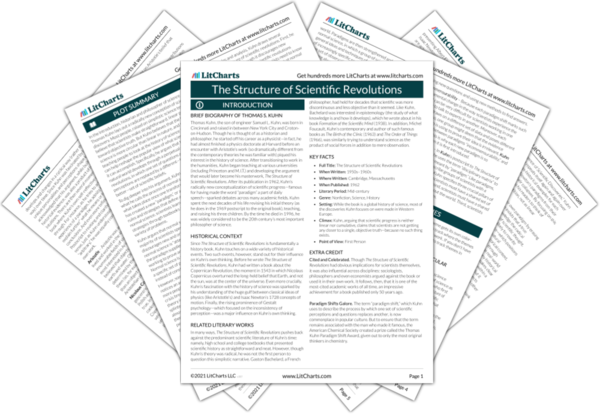Kuhn uses jigsaw puzzles as a symbol for the process of normal science. Jigsaw puzzles (like normal science) have a set of rules “that limit both the nature of acceptable solutions and the steps by which they are to be obtained.” In other words, the point of a jigsaw puzzle is to mimic the picture on the box, not to create a new picture. Similarly, the point of normal science is to apply a given paradigm in a predictable way, not to make a new discovery. Both jigsaw puzzles and normal science are about arriving at a pre-set solution in inventive ways. Moreover, Kuhn argues that scientists who engage in normal science (which is the vast majority of scientists) are doing so for the same reasons other people might do a crossword or solve a jigsaw puzzle—rather than trying to help humanity or see the world in a new way, these scientists are motivated by the idea that they can “succeed in solving a puzzle that no one before has solved or solved so well.”
Jigsaw Puzzles Quotes in The Structure of Scientific Revolutions
There must also be rules that limit both the nature of acceptable solutions and the steps by which they are to be obtained. To solve a jigsaw puzzle is not, for example, merely “to make a picture.” Either a child or a contemporary artist could do that by scattering selected pieces, as abstract shapes, upon some neutral ground. The picture thus produced might be far better, and would certainly be more original, than the one from which the puzzle had been made. Nevertheless, such a picture would not be a solution. To achieve that all the pieces must be used, their plain sides must be turned down, and they must be interlocked without forcing until no holes remain.
When acute, this situation is sometimes recognized by the scientists involved. Copernicus complained that in his day astronomers were so “inconsistent in these [astronomical] investigations . . . that they cannot even explain or observe the constant length of the seasonal year.” “With them,” he continued, “it is as though an artist were to gather the hands, feet, head and other members for his images from diverse models, each part excellently drawn, but not related to a single body, and since they in no way match each other, the result would be monster rather than man.” Einstein, restricted by current usage to less florid language, wrote only, “It was as if the ground had been pulled out from under one, with no firm foundation to be seen anywhere, upon which one could have built.”












